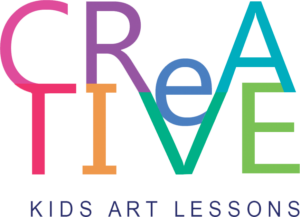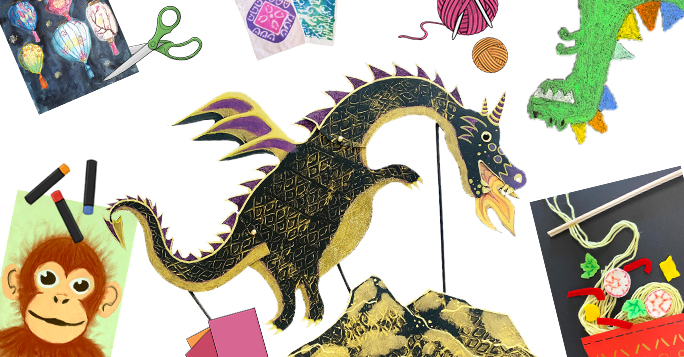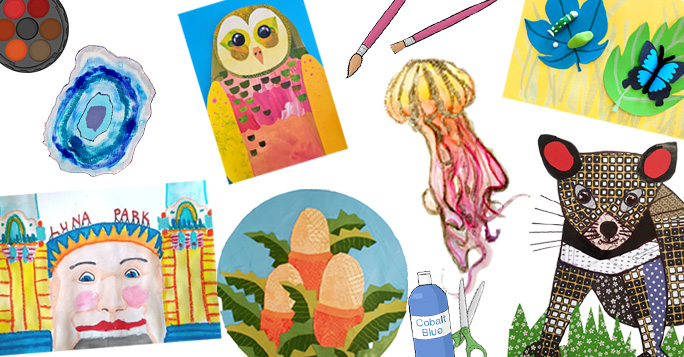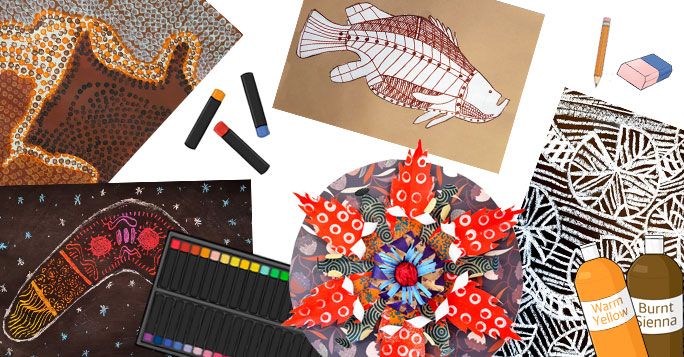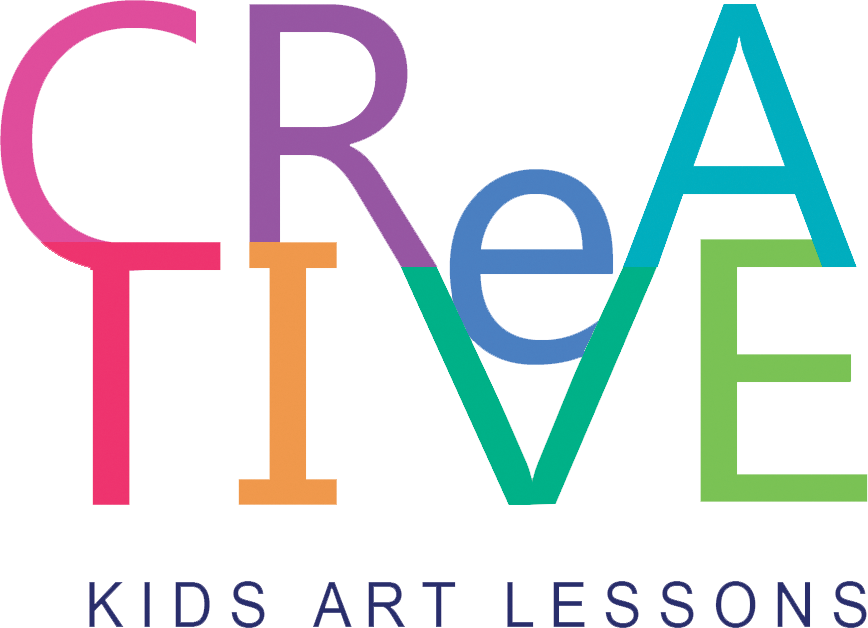Japan
Look at aspects of Japanese art and culture, creating artworks of sushi, kimonos and origami. Learn about manga and notans and celebrate spring with a cherry blossom artwork or carp kite.
 In the K-2 category students will create a brightly coloured carp fish kite, using a wire structure and adding scales with tissue paper. The kites can be used as a decoration or flown in light wind. This lesson plan draws on elements of repetition, pattern and uses harmony and balance during the construction process. We will create a gorgeous collage artwork of a child in a traditional Japanese kimono and make several different origami animals using paper folding techniques. These lessons will draw on the elements of line, repetition, colour and pattern, and will expand student’s understanding of different compositions and their use in creating harmony, balance, and conveying meaning to the viewer.
In the K-2 category students will create a brightly coloured carp fish kite, using a wire structure and adding scales with tissue paper. The kites can be used as a decoration or flown in light wind. This lesson plan draws on elements of repetition, pattern and uses harmony and balance during the construction process. We will create a gorgeous collage artwork of a child in a traditional Japanese kimono and make several different origami animals using paper folding techniques. These lessons will draw on the elements of line, repetition, colour and pattern, and will expand student’s understanding of different compositions and their use in creating harmony, balance, and conveying meaning to the viewer.
 Within the 3-4 year category students can have fun sculpting Japanese sushi with three different types to create. Using modelling medium, there are individual sushi sheets with step by step instructions to create a lunchbox of six different sushi that look good enough to eat! Students will learn about colour mixing, texture and 3D composition to create this fun, lunchbox of sushi. Cherry Blossoms flower in springtime in Japan and are known for their beautiful, soft display of colour. We will begin with blowing ink to create the gnarled structure of the cherry tree and then add the delicate flowers with acrylic and marker. Students will enhance their representational painting skills, learning how to create detailed flowers, by starting with basic shapes and moving towards finer detail. Students will practice textural effects, composition, and colour mixing skills through acrylic painting and modelling mediums. The elements of colour, pattern, form and repetition will be covered in this unit.
Within the 3-4 year category students can have fun sculpting Japanese sushi with three different types to create. Using modelling medium, there are individual sushi sheets with step by step instructions to create a lunchbox of six different sushi that look good enough to eat! Students will learn about colour mixing, texture and 3D composition to create this fun, lunchbox of sushi. Cherry Blossoms flower in springtime in Japan and are known for their beautiful, soft display of colour. We will begin with blowing ink to create the gnarled structure of the cherry tree and then add the delicate flowers with acrylic and marker. Students will enhance their representational painting skills, learning how to create detailed flowers, by starting with basic shapes and moving towards finer detail. Students will practice textural effects, composition, and colour mixing skills through acrylic painting and modelling mediums. The elements of colour, pattern, form and repetition will be covered in this unit.
 Within the 5-6 year category, students will learn about Japanese Notan, a form of paper cutting and composition. Students will have the opportunity to learn the basic concept of Notans and then explore and experiment to create their own artworks in black and white and then with the addition of colour. These works will look at contrast as well as positive and negative space in composition. Anime characters have long been popular with older students and we have Chibi (meaning cute) anime characters that are child friendly to draw and create. Chibi are the kid’s version of manga. We have a guide on how to draw Chibi with the dimensions and proportions and kids can draw and colour anime characters or use the bases provided to create their own characters. Students will enhance their representational sketching skills, learning how to create detailed drawings by starting with basic shapes and moving towards finer details. Students will also practice colouring and textural effects, composition, and colour mixing skills with watercolour.
Within the 5-6 year category, students will learn about Japanese Notan, a form of paper cutting and composition. Students will have the opportunity to learn the basic concept of Notans and then explore and experiment to create their own artworks in black and white and then with the addition of colour. These works will look at contrast as well as positive and negative space in composition. Anime characters have long been popular with older students and we have Chibi (meaning cute) anime characters that are child friendly to draw and create. Chibi are the kid’s version of manga. We have a guide on how to draw Chibi with the dimensions and proportions and kids can draw and colour anime characters or use the bases provided to create their own characters. Students will enhance their representational sketching skills, learning how to create detailed drawings by starting with basic shapes and moving towards finer details. Students will also practice colouring and textural effects, composition, and colour mixing skills with watercolour.
Related Art Lessons
Explore Art from South East Asia with a range of exciting lesson plans. Try out different art materials and techniques including painting, drawing and fibre textile projects.
Explore Art from Australia with a range of exciting lesson plans. Try out different art materials and techniques including painted paper collage inspired by Pete Cromer, drawing, mixed media and painting.
Explore Australian Aboriginal Artists and their culture in this second unit of colourful art lesson plans. We will use a range of materials and techniques including painted paper collage, drawing, clay and painting.
